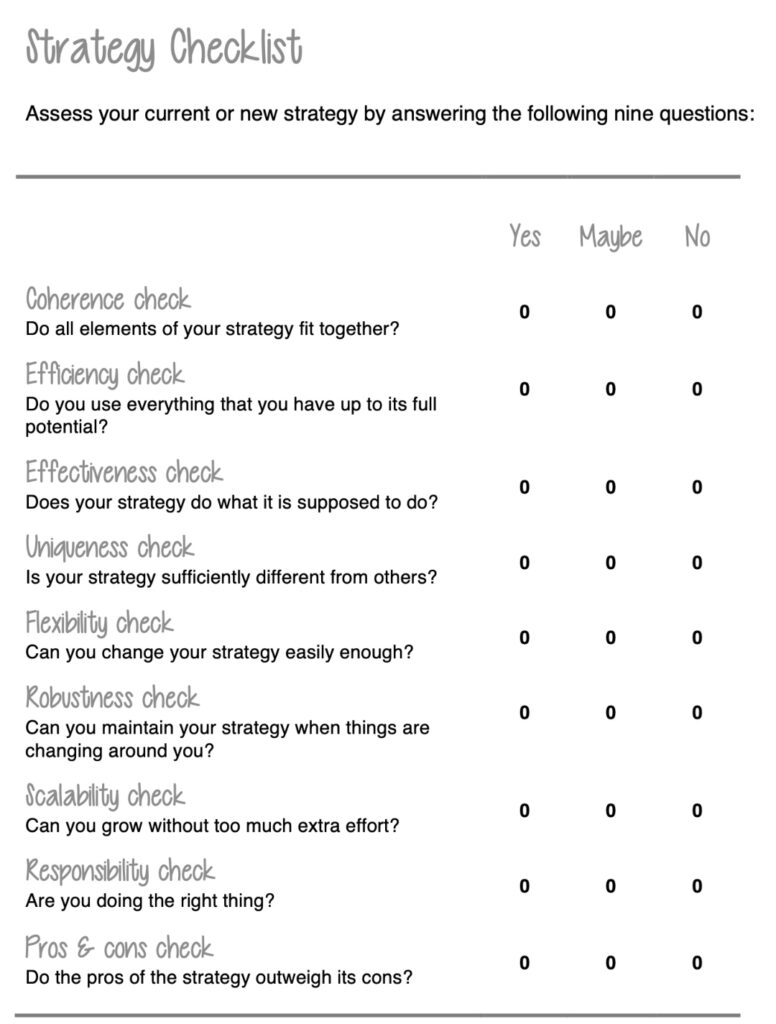High Level Strategy
Nadenken over een High Level Strategy is zinvol, wijs en getuigt van kennis ter zake, juist als je het wellicht enkel en alleen jouw opdracht en taak is om een jaarlijkse strategie uit te zetten en te realiseren.
Bijdrage leveren
Als iedereen in de organisatie op de hoogte is van het hogere strategische plan en deze ook ten gronde begrijpt, dan is het voor een ieder eenvoudiger te bedenken hoe hij / zij meer direct en gericht een bijdrage zou kunnen leveren. Dat kan bijvoorbeeld inhouden een meer en scherpere focus op innovatie, of op concurrentie of op een ander belangrijk kernaspect of -concept.
Vier High Level Strategieën
Er zijn vier high level strategieën te beschouwen en het is van belang te onderzoeken welke het beste de vigerende strategie van de organisatie beschrijft. Ga vervolgens na welke strategische benadering het beste bij die van de organisatie van toepassing zou kunnen zijn, hoe de concepten van die strategie toegepast kunnen worden in de organisatie en hoe jouw eigen rol als strateeg er uit zou kunnen zien.
-
Seeking a Blue Ocean
The best-selling book Blue Ocean Strategy uses the analogy of a red ocean to represent a market environment in which companies fiercely compete.
In contrast, a blue ocean describes a situation in which a company creates a new category of product or service that can be sold without competition.
For example, Cirque du Soleil stripped away many of the classic elements of a circus and offered a new type of show at a higher price to theater-going audiences instead of offering this style of entertainment at a low price to audiences sitting outdoors in tents.
Blue Ocean Strategy requires innovation, leadership, and the imagination to sometimes serve customers who do not yet understand why they need what you are offering.
-
Choosing Between Cost and Differentiation
A lecture at the University at Albany stated that organizations can choose between cost and differentiation to arrive at five different types of strategies:
- Cost leadership: Using efficient, low-cost business practices to offer the lowest, most-attractive prices to a mass customer base
- Differentiation: Using great customer service, special features, innovation, and more to offer high-value products or services to a mass market without competing on price
- Focused low cost: Focusing on cost leadership and marketing only to a relatively small group of customers
- Focused differentiation: Competing through differentiation and marketing only to a relatively small customer base
- Integrated low-cost and differentiation: Marketing to a mass audience using both differentiated features and low prices
-
The Chess Master
Some companies approach strategy like a game of chess. They carefully assess the current market situation, all the pieces they have available, and where the competition has placed their pieces on the board.
They choose a goal they’re passionate about and then plan many moves ahead, seeking to outmaneuver the competition and anticipate every adverse circumstance.
If these companies and their managers are able to create plans that are detailed enough and anticipate their business moves well enough, they may have the satisfaction of seeing their ideas work as expected and their company reaching its goals despite competition and difficult circumstances.
-
Strategizing about Strategy
Your strategy needs a strategy. Advocates are using a system to choose between categories of strategies.
The first step is to assess the strategic situation by rating the unpredictability of the markets, the changeability of the situation, and the difficulty or ease of current problems.
Then, a company uses what it learns from this assessment to choose between five strategy types:
- Classical: simply analyzing, planning, and executing in a stable environment;
- Adaptive: in an unpredictable environment, running a series of experiments and codifying and extending those that perform best;
- Visionary: creating new markets and innovations in a predictable yet changeable environment;
- Shaping: setting up a platform for other businesses to connect in a changeable, unpredictable environment;
- Renewal: revamping a business model because of the imminent failure of a corporation.
NB: Een strategy check is altijd zinvol. Hier een praktische, handige checklist

